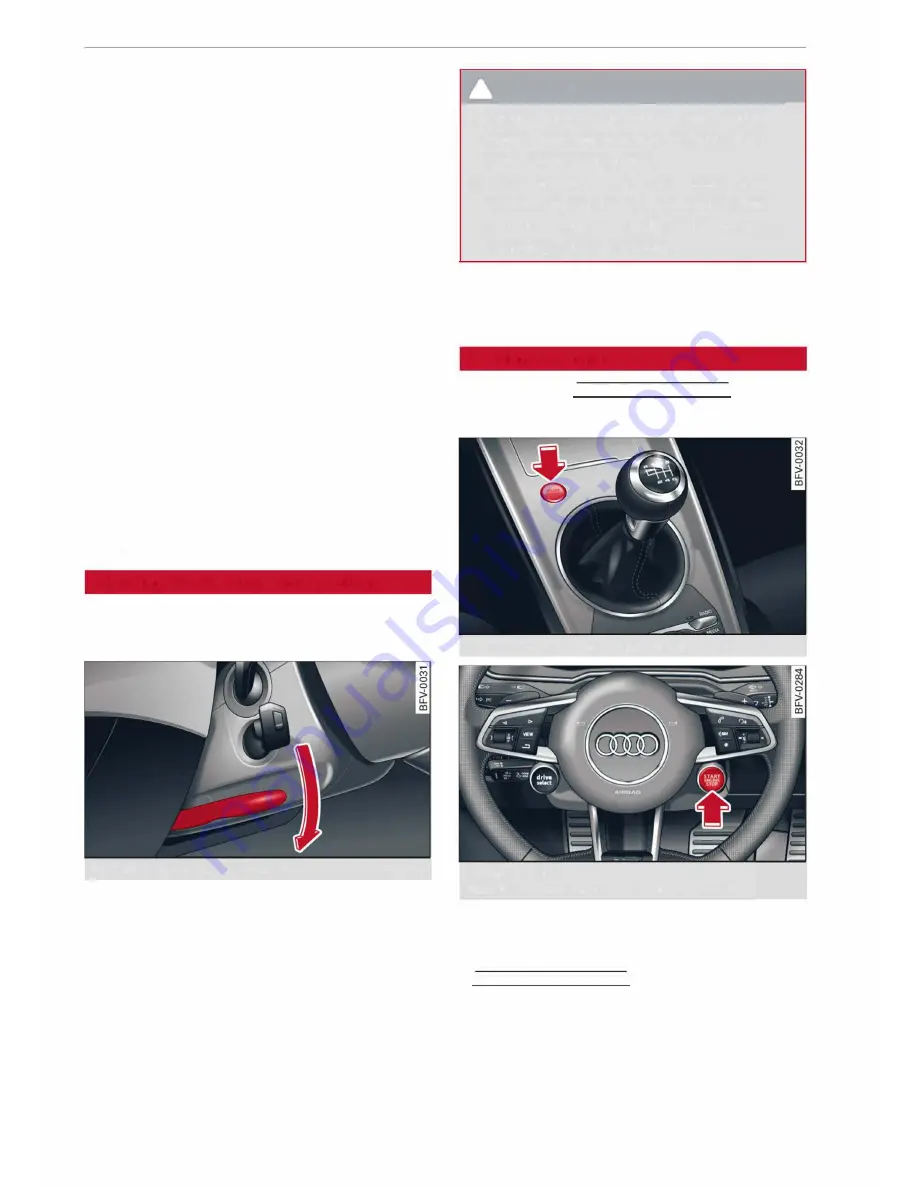
Driving
The tyre pressures should always be checked
when the tyres are
cold.
Do not use
winter tyres
all through the year; they
will increase fuel consumption by up to 10 %.
Avoid carrying unnecessary loads
Every kilo of
extra weight
will increase the fuel
consumption, so it is worth checking the luggage
compartment occasionally to make sure that no
unnecessary loads are being transported.
Save electrical energy
The engine drives the alternator to generate elec
tricity. This means that fuel consumption rises
when more power is required for electrical equip
ment. Switch off electrical equipment when it is
not needed. Electrical equipment which uses a
lot of electricity includes the blower (at a high
setting), the rear window heating and the seat
heating*.
Steering
Adjusting the steering wheel position
The height and reach of the steering wheel can
be adjusted as required to suit the driver.
Fig. 71
Lever on steering column
� Press the lever¢
Fig. 71
down ¢
.&,
.
� Move the steering wheel to the desired posi
tion.
� Then push the lever towards the steering col
umn until the catch engages.
68
A
WARNING
- Never adjust the position of the steering
wheel when the vehicle is moving - this
could cause an accident.
- Press the lever upwards so it is secure and
so that the position of the steering wheel
cannot shift unexpectedly while the vehicle
is moving - risk of accident!
Starting and stopping
the engine
Starting the engine
-
You can use the
!START ENGINE STOP!
button to
switch on the ignition and start the engine.
Fig. 72
Centre console: START ENGINE STOP button
Applies to TT RS
Fig. 73
Steering wheel: START ENGINE STOP
Switching the ignition on/off
� To switch the ignition on/off, press the
!START ENGINE STOP!
button without pressing
the clutch pedal (manual gearbox) or brake
pedal (automatic gearbox). Diesel engines are
preheated when the ignition is switched on.
�
















































